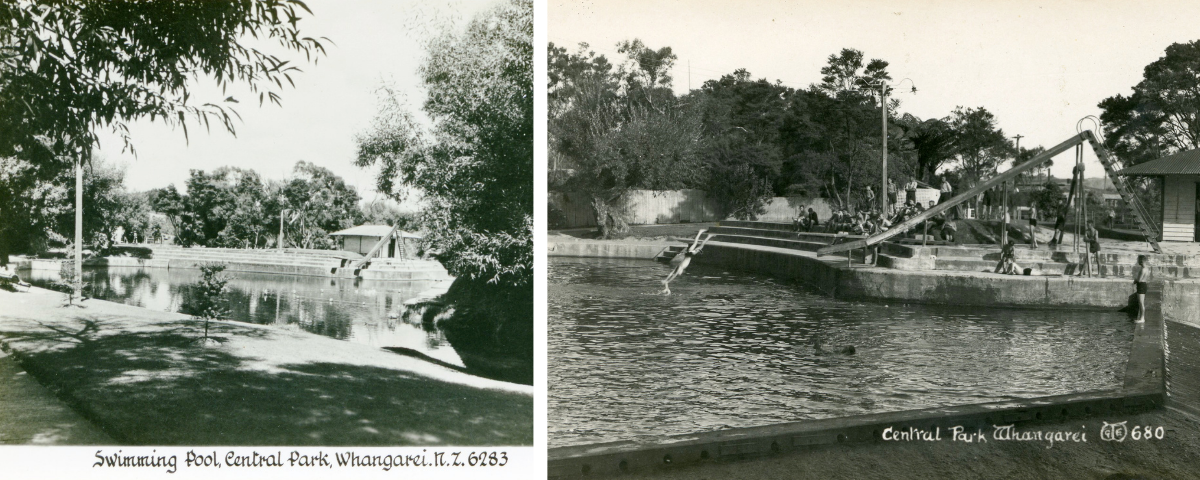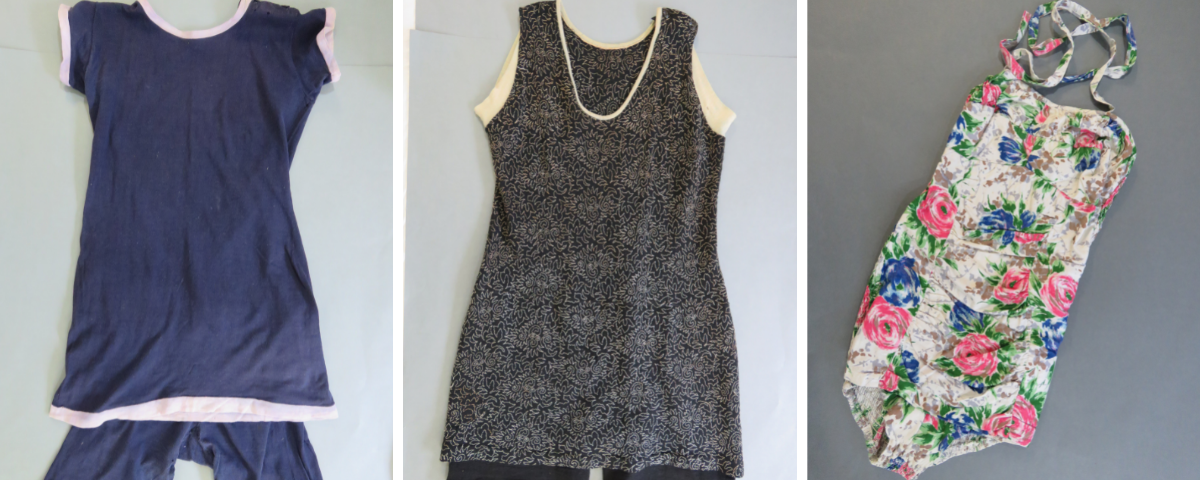Alison Sofield, Volunteer Collections
Have you been swimming this summer? I’m sure that many of you have. We are fortunate here in the North that there are plenty of options for this enjoyable pastime. Our agreeable climate, the lovely beaches and rivers and access to a modern aquatic centre all favour a water-spent afternoon.
Swimming was a popular recreation in Whangārei a hundred years ago judging by a report in the Northern Advocate, 2 March 1923, with an account of a very successful Swim Carnival held at the Mair Park Pool. It was organised by the Whangārei Swimming Club. This natural pool was at the mercy of the tides which meant that the programming of the races was tight. A barge was moored across the Hatea River to serve as a starting point with a skiff used as the finishing line. A highlight of the day was the race between the day boys and the boarders from Whangārei Boys High School. The success of swimmers was listed in the paper, both children and adults, as well as a keenly contested diving competition.
From the late 1800’s, Whangārei enjoyed a culture of recreational swimming with three areas of note, namely Mair Park Pool, Central Park or Cafler Pool as it was known, and the Kamo Domain Pool. The Whangārei Swimming Club became affiliated to New Zealand Amateur Swimming Association in 1893, and then in 1918 the club raised funds to build a pool in the grounds of Whangārei Primary School to be used by the school children as well as by the club. Sadly today, spiralling costs have seen many primary schools abandon their pools thus removing a safe learn-to-swim environment.
In 1964 an Olympic style pool was built in Cafler Park with tiered concrete seating, later to be demolished and eventually replaced in 2004 by the present Aquatic Centre on Riverside Drive.
The Whangārei Museum holds a number of photographs in its archival collection of these popular swimming areas as well as some examples of swimming costumes from the 1920’s and onwards.

One ladies costume from around the 1920’s features a navy blue cotton knit two piece (Not a bikini – they didn’t appear until 1940’s) This costume has pale blue binding and a drawstring at the waist of the shorts. The top almost covered the shorts - very modest! Another costume of note is a woollen one piece, once worn by Clara Clarke, the daughter-in-law of Dr. Clarke of the Homestead at Maunu. Clara’s costume is dated around the 1940’s.
In the 50’s shirred cotton bathing suits for women were popular but because of the corrosive nature of saltwater they were often prone to embarrassing wardrobe malfunctions. Modern synthetic fabrics have revolutionised the design, wearability, and comfort of today’s swimwear.

It was a fascinating exercise to research the early history of recreational swimming. The Ancient Egyptians saw swimming as a useful exercise as early as 2500 B.C. as well as the Assyrians, Greek and Romans. The Greeks in particular saw swimming as part of martial training. The Romans built pools, distinct from baths, in the 1st century, as well as building the first heated pool. In England in the 17th century, seaside bathing became popular though it must have been uncomfortable for the ladies as the required costume was hardly different from everyday clothing. It wasn’t until the 19th century that swimming both as a recreation and a sport began in earnest. Swimming was included as a sport in 1896 when the modern Olympics began though women were not allowed to compete in swimming events until the 1912 Olympics in Stockholm.
All this aside, it is interesting to tour through the museum’s archive looking at both photographic and written material that paint a picture of Whangārei’s early history over the last hundred years or so.